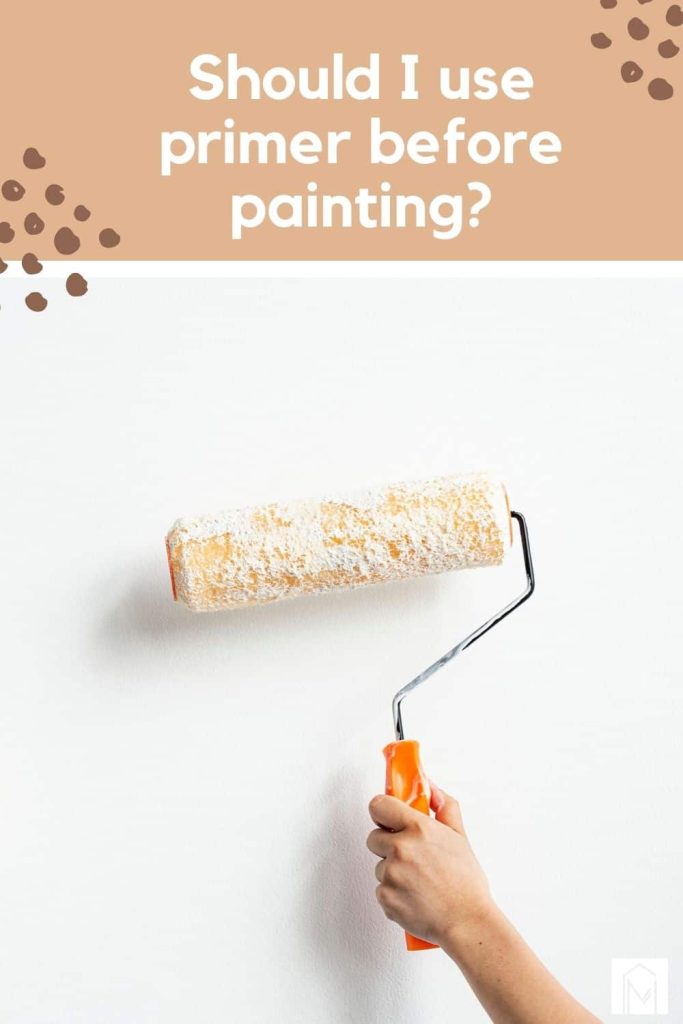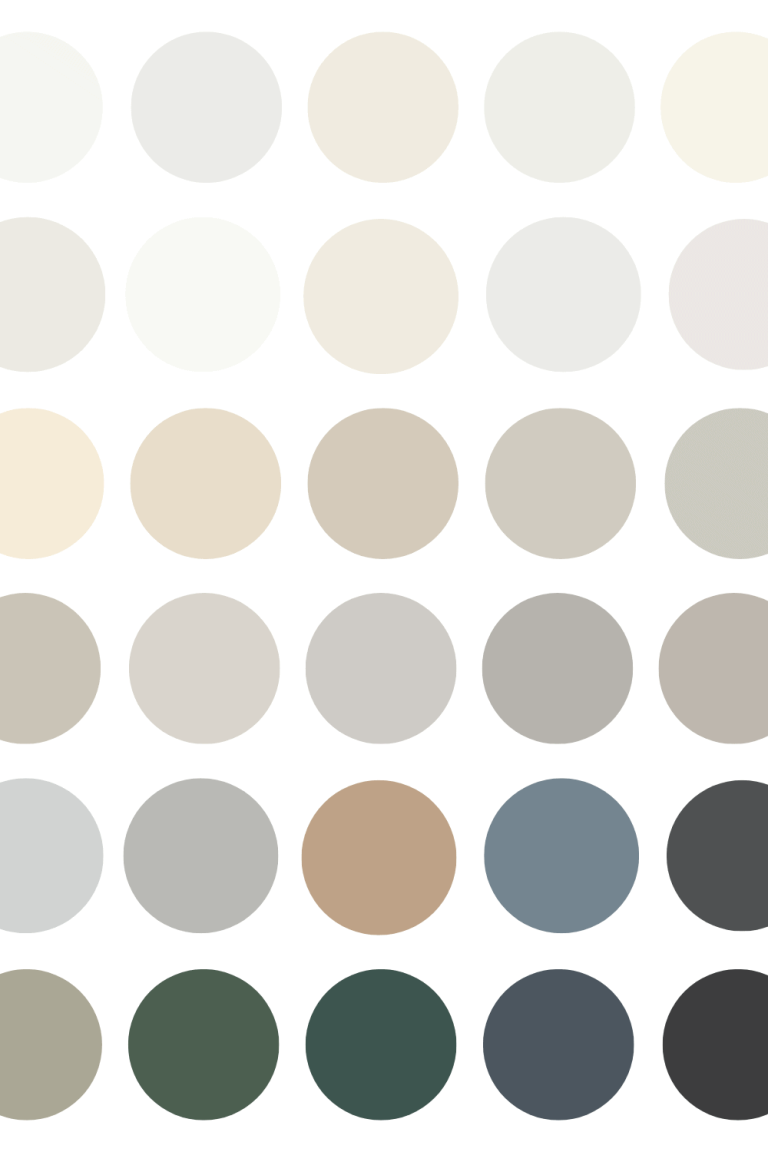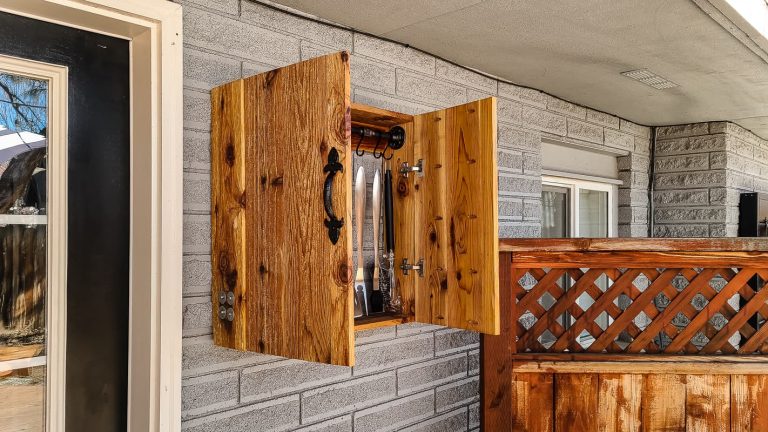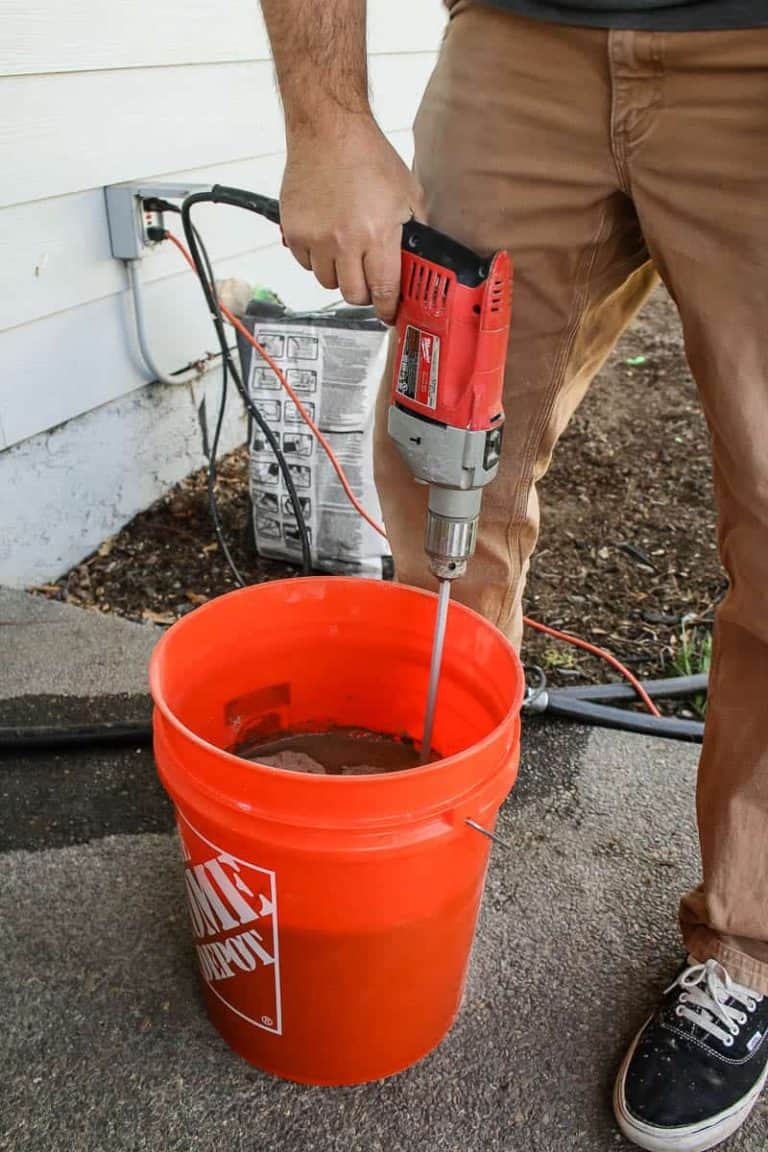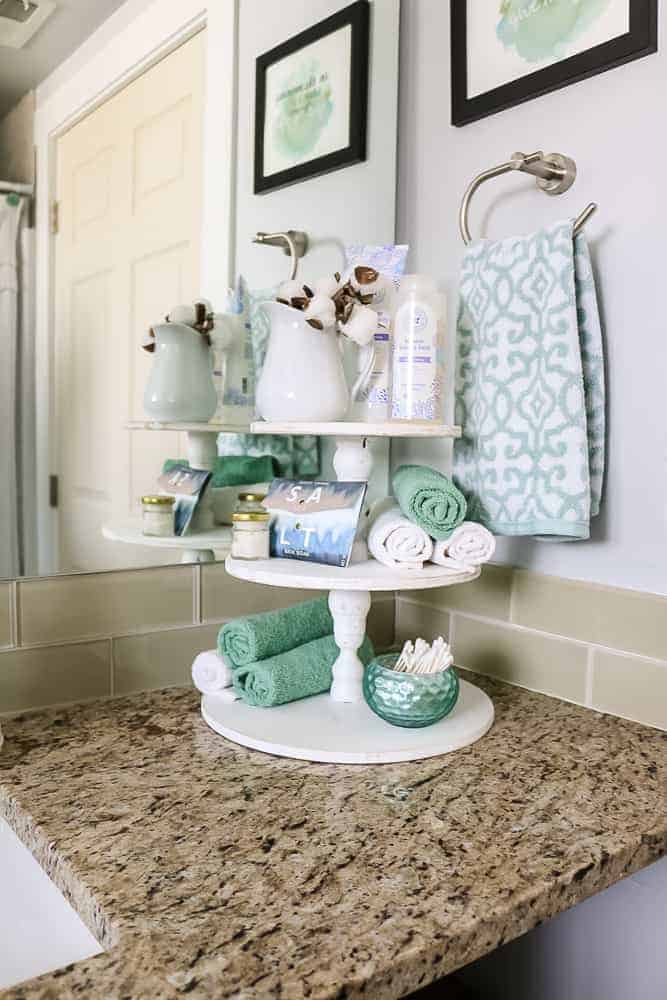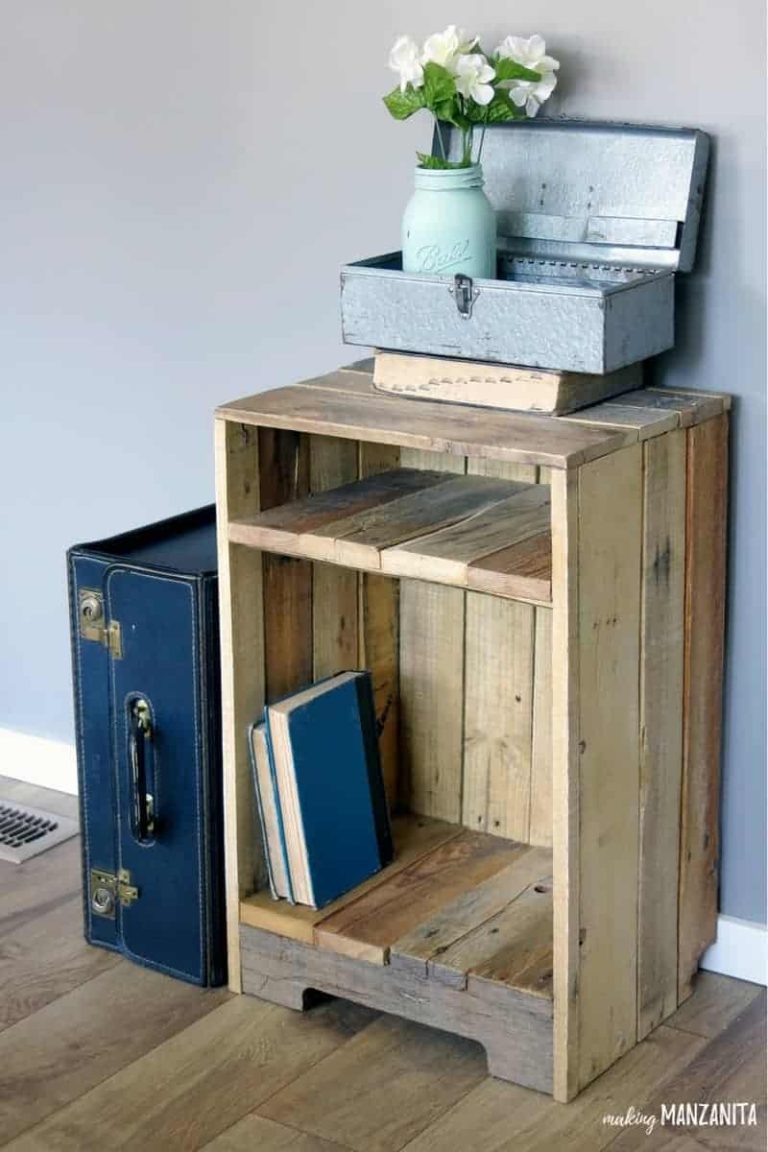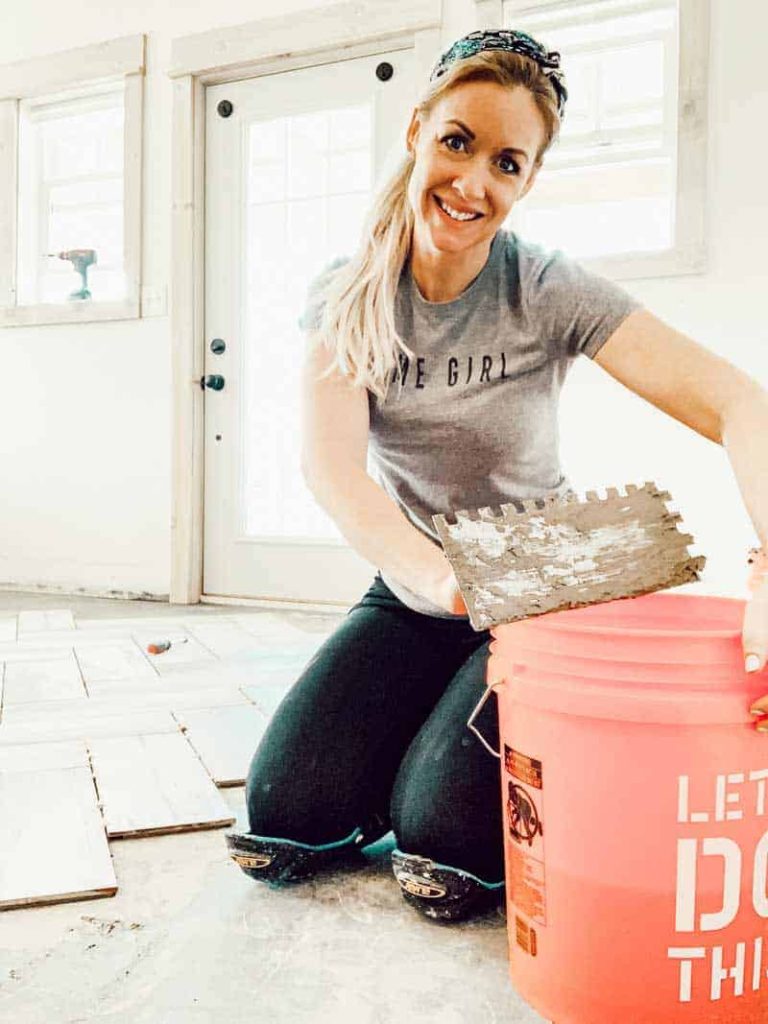Do I need primer before painting?
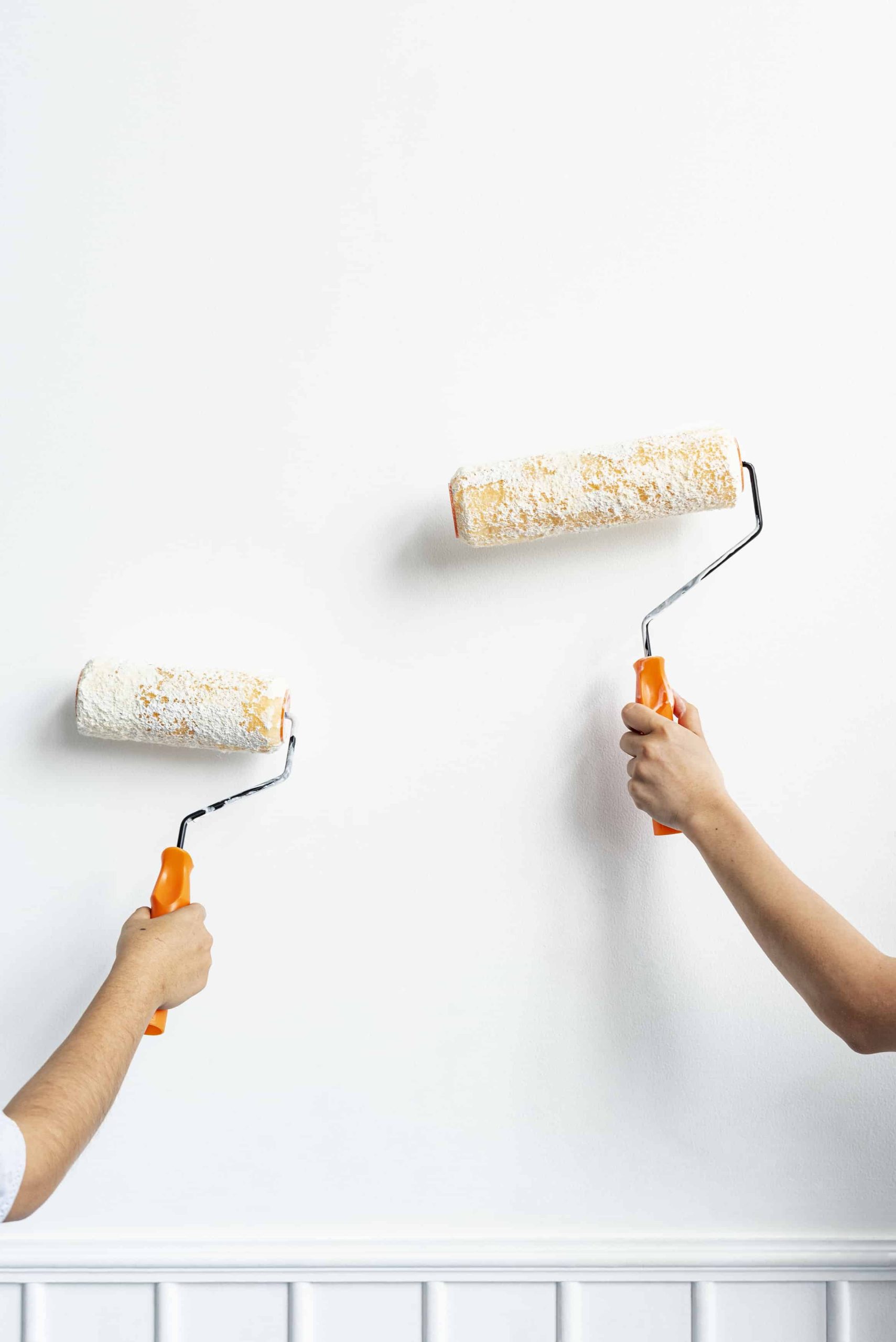
Most painting professionals and paint companies will recommend applying a primer before painting. You’ll probably even notice that it is recommended in the instructions on the back of your paint can.
But if you’re anything like me, you’re probably trying to find all the ways you can to paint faster, so you’re wondering…”do I need primer before painting?” Can’t I just skip that step?
Primer is essentially a kind of sticky, flat paint that creates the perfect “skin” for new paint layers by providing a porous surface for the paint to adhere to and hides surface stains.
Table of Contents
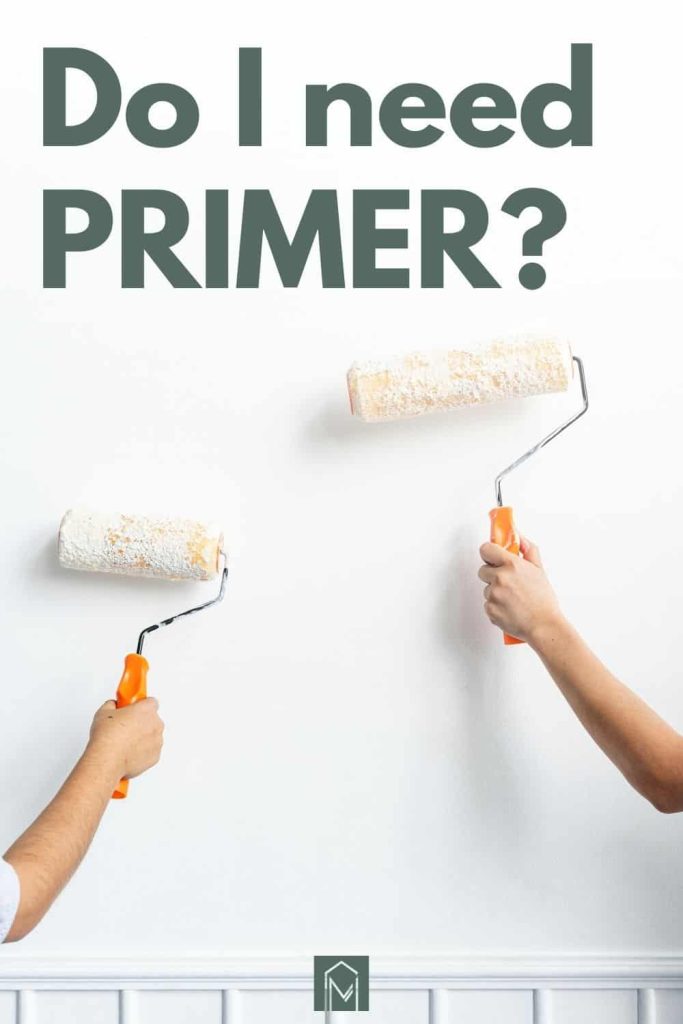
Related: Other Interior Painting Articles
- Choosing Front Door Paint Colors (& How To Paint A Door)
- Two Tone Walls in Bedroom: How To Paint Straight Lines
- Mountain Mural Tutorial (Featuring Behr Paint Colors Trends)
- Behr Chic Gray Paint Reveal (+ The Best Order of Painting A Room)
- Modern Sponge Painting | Semi Circle Pattern in Back of Locker Cabinets
- How To Paint An Arch Like A Pro
- A Basic Paint Sheen Guide for Interior and Exterior Surfaces
- How To Cut In Paint without Painter’s Tape
- How To Paint A Ceiling With A Roller
- Behr Fashion Gray | Paint Color Overview and Review
- How To Paint A Room For Beginners | Ultimate Guide
- Tips for Painting Baseboards and Trim
- Black Bamboo Behr | Paint Color Overview and Review
- Behr Meteorological | Paint Color Overview and Review
- Behr Falling Snow | Paint Color Overview and Review
- 16 Gorgeous Green Accent Walls
- Snowy Pine Behr Paint Overview
- In The Moment Behr Paint Color Overview
- 22 Front Door Paint Colors to Inspire You
- Master Bedroom Colors | 20 Great Paint Color Ideas with Pictures
- Behr Midnight in NY Paint Color Overview
- Graphic Charcoal Behr | Paint Color Overview and Review
- Do I need Primer Before Painting?
- How to Paint a Room Fast
- How To Clean Walls Before Painting
- Interior Painting Tools List – 17+ Must-Haves for Homeowners
- Cost to Paint a Room – DIY vs Hire Comparison
- How to Transform Walls with Just Paint: 20+ Wall Painting Ideas
This primer guide contains affiliate links, but nothing that I wouldn’t recommend wholeheartedly. Read my full disclosure here.
Do I need primer – video
If you love DIY videos, don’t forget to subscribe to our YouTube channel!
Do I need primer before painting?
Well, the answer is not super straightforward. Honestly, the answer is…sometimes. So we’re going to walk through all of the different scenarios in the article so you can determine if you need primer before painting or not.
While not all painting surfaces require priming, it’s always a good idea to prime. In fact, when in doubt, prime it!
Here are some common examples of when a primer is only recommended and when it’s absolutely necessary.
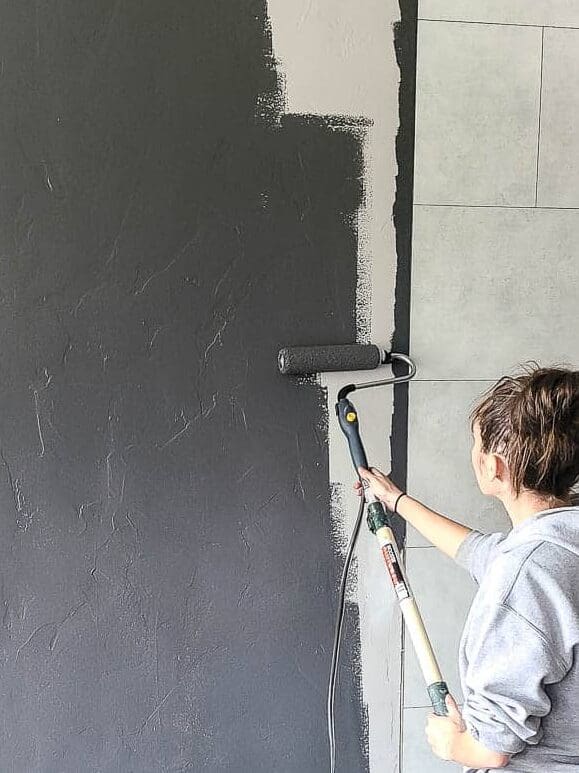
Do I need primer before painting interior walls?
You always need to prime before painting bare drywall or newly textured walls. Drywall texture is very porous and will soak up all your paint if applied without primer. Use drywall primer to avoid this.
To get a professional finish, you should also prime before painting over patched nail holes. Sometimes, the material that covers the nail holes (joint compound, spackle, etc) can show through the paint sheen and create a shiny or dull spot. This is called “flashing”. If you prime over these areas, this will eliminate any potential issues.
If you are painting over a darker color or walls with stains, use a stain-blocking primer, like this, to prevent darker spots or color from showing through the new coat.
In some cases, changing from a high paint sheen to a low paint sheen can cause some issues, so it’s a good idea to prime before you paint when changing paint sheens.
Aside from the examples above, a good paint and primer in one is the recommended option for interior walls, regardless of the condition of the walls. We usually use Behr’s Marquee or Ultra line for our interior painting (check out all of our home’s paint colors here)
Do I need primer before painting over old paint?
If you are painting a wall the same or similar color, priming isn’t required but will enhance the overall appearance of your walls.
If you are using a different type of paint, like applying latex over oil, you will need to use primer before applying the new paint.
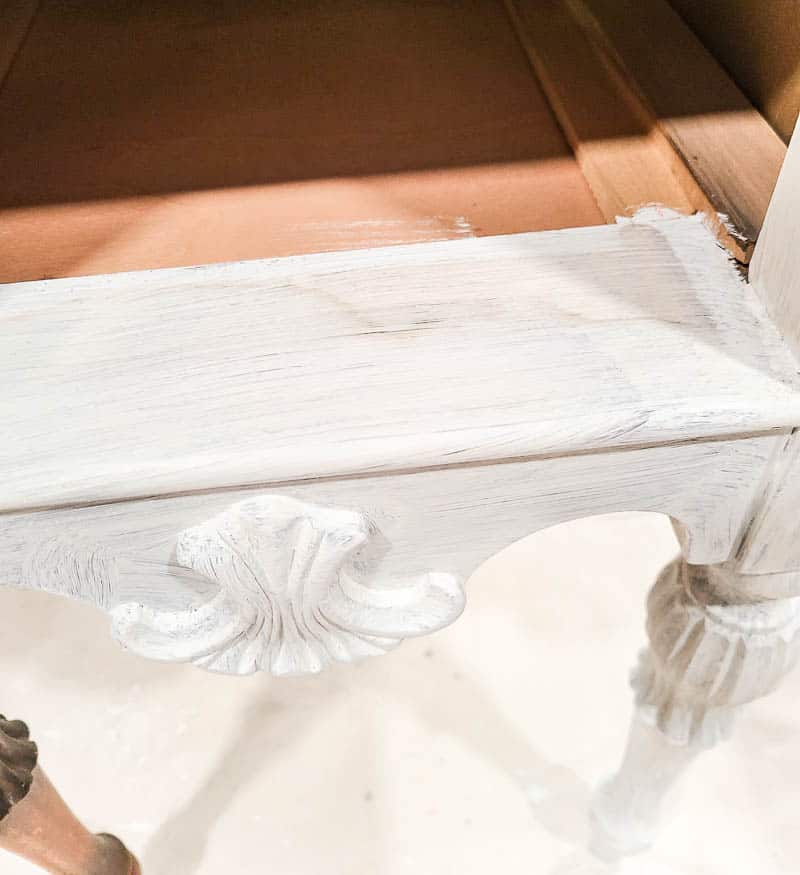
Do I need primer before painting furniture?
While it’s recommended to prime furniture before painting, it’s not absolutely necessary. It truly depends on the type of furniture and the paint and color you are using.
A fresh coat of paint is the easiest way to flip a piece of furniture. Before you begin painting, make all the necessary repairs.
If you are using stained wood, the stain may bleed through onto the paint. Test a small, inconspicuous area of the furniture first, or simply prime anyway!
Even if you’re using chalk or milk paint on your furniture, I’d still recommend using a primer before painting. Otherwise, you could deal with wood tannins bleeding through the paint or the painting chipping easily. Usually, this isn’t noticed until later (like when you go to seal the furniture after painting), so just save yourself the trouble and prime!
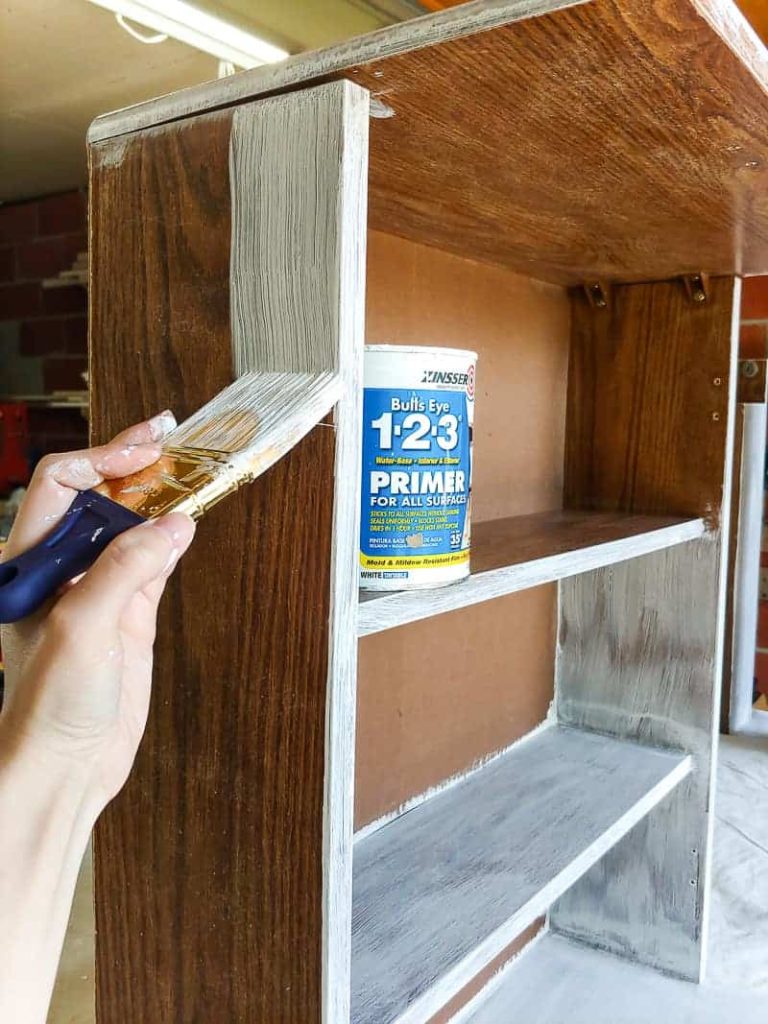
If you’re painting laminate furniture (rather than real wood furniture), a primer is required to get good adhesion. Check out the boho cabinet we created in a $3 laminate find.
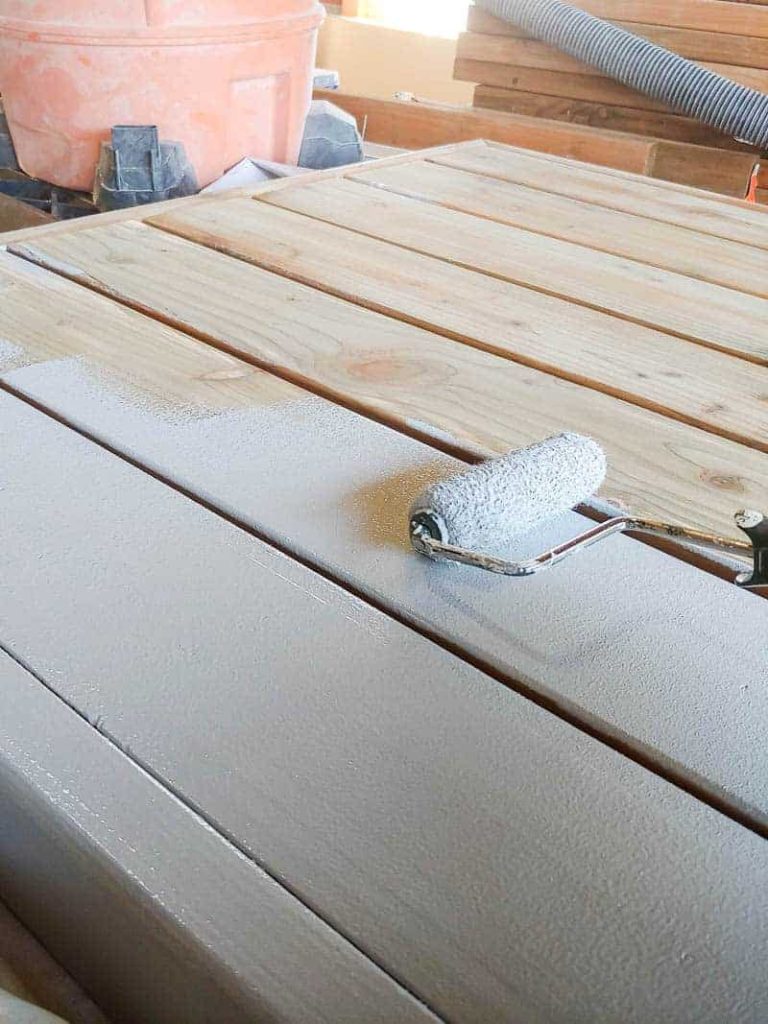
Do I need primer before painting wood?
If you are painting bare wood, priming is absolutely necessary! The tannins in the wood will bleed through the paint if you skip this step. Some types of wood may bleed through more than others, so just prime.
If you are working with sealed wood, make sure you sand it down (or strip it), prime, then paint.
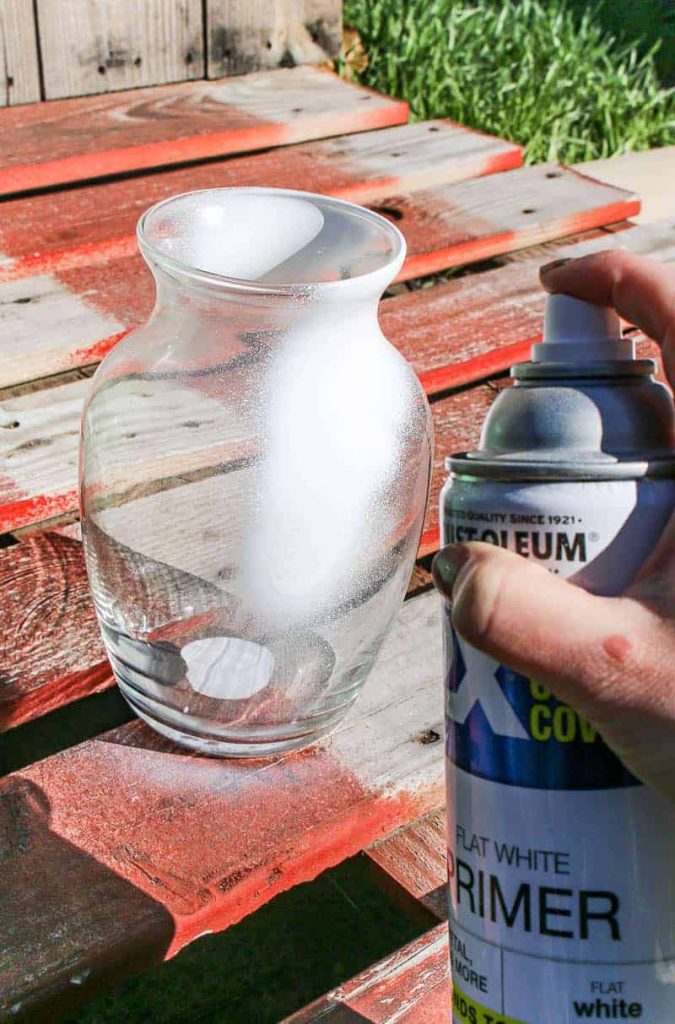
Do I need primer before spray painting?
Typically, spray paint goes on in a thick coat that adheres well to most surfaces. Priming isn’t required but is recommended depending on the material you are painting.
Using primer before spray painting ensures a nice, even finish. While it is possible to avoid using primer, it may take several coats of paint to achieve the same result as with primer. Normally, you will only need one coat of primer. Some spray paints are paint and primer in one, so you can save yourself a little hassle by using those.
How to Use Primer
In order for a new paint color to grab onto a wall or surface, it must be the right texture. The porosity of the painting surface determines whether or not the surface needs a primer.
- When the surface is too porous or textured, multiple coats of paint will be required before the paint develops a thick, protective shell.
- When the painting surface is too glossy, the new paint color can’t adhere to the surface.
Using primer will create the perfect canvas for the paint to go on smoothly. Primer also covers stains, which makes it more economical than applying multiple coats of paint. Understanding when and how to apply primer is key to a long-lasting paint job and saving you time and money.
In a nutshell, here’s how to use primer:
- Prepare the space. Follow this post to learn how to prepare your room and home for painting. Don’t forget to clean the walls, and fill in nail holes.
- Choose the paint primer. Choose a latex or oil paint primers depending on what type of paint you’ll be using. To get the best adhesion and coverage, the paint and primer should be the same (ie: both latex or both oil). Latex is easier to apply and is more flexible than oil. Latex also resists peeling and cracking and can be easily cleaned with soap and water. Oil-based primer penetrates wood deeper and can prevent the wood’s tannin from coming to the surface, but it requires some more intense clean up of your painting tools with mineral spirits.
- Apply the primer. Shake up thoroughly and stir paint can with stir stick. Pour into a paint tray and apply with a brush or roller, cutting into the edges of the wall first.
- Allow to dry and sand if needed. Make sure to allow the primer to dry completely before applying a coat of paint. Apply a 2nd coat of primer if you see any stains still coming through after the 1st coat of primer.
Using self-priming paints (or paint and primer in one)
You can purchase paint and primer separately or mixed together in one paint bucket. Most professionals will recommend using a separate paint and primer.
Sometimes, like in the situations outlined above, it’s necessary to prime and then apply a coat of paint and primer in one.
But, if your walls are in good condition, using the all-in-one combination of paint and primer should work just fine.
While only purchasing one can for a paint job is convenient and helps cut the cost of painting, you have to remember that paint and primers aren’t miracle workers. Also keep in mind that because a paint and primer in-one is a thicker substance, it takes longer to dry than each one separately.
Furthermore, it’s not always a time and money saver as advertised. Oftentimes, the paint and primer combination still requires more than one coat, depending on the color you are using. We usually plan for 1 coat of primer, if needed and 2 coats of the wall color.
Even if you’re tempted to skip it, applying primer before painting is an important step for some paint situations.
To summarize, you definitely need to prime if:
- Painting newly textured or patched walls with fresh joint compound
- Painting over dark colored walls with a lighter color
- Painting over stained walls
- Changing types of paint (from latex to oil, or visa versa)
- Painting laminate furniture
- Painting bare wood
It’s recommended, but not required, to prime if:
- Changing from a high sheen to a low paint sheen
- Painting wood furniture
- Before spray painting
You can skip priming if:
- Painting clean walls in good condition with a similar color and using a high-quality paint + primer in one
If you decide to skip priming on your walls in good condition, keep in mind that you’ll likely need more coats of paint for adequate coverage and the paint may not last as long as it would with a primer.
